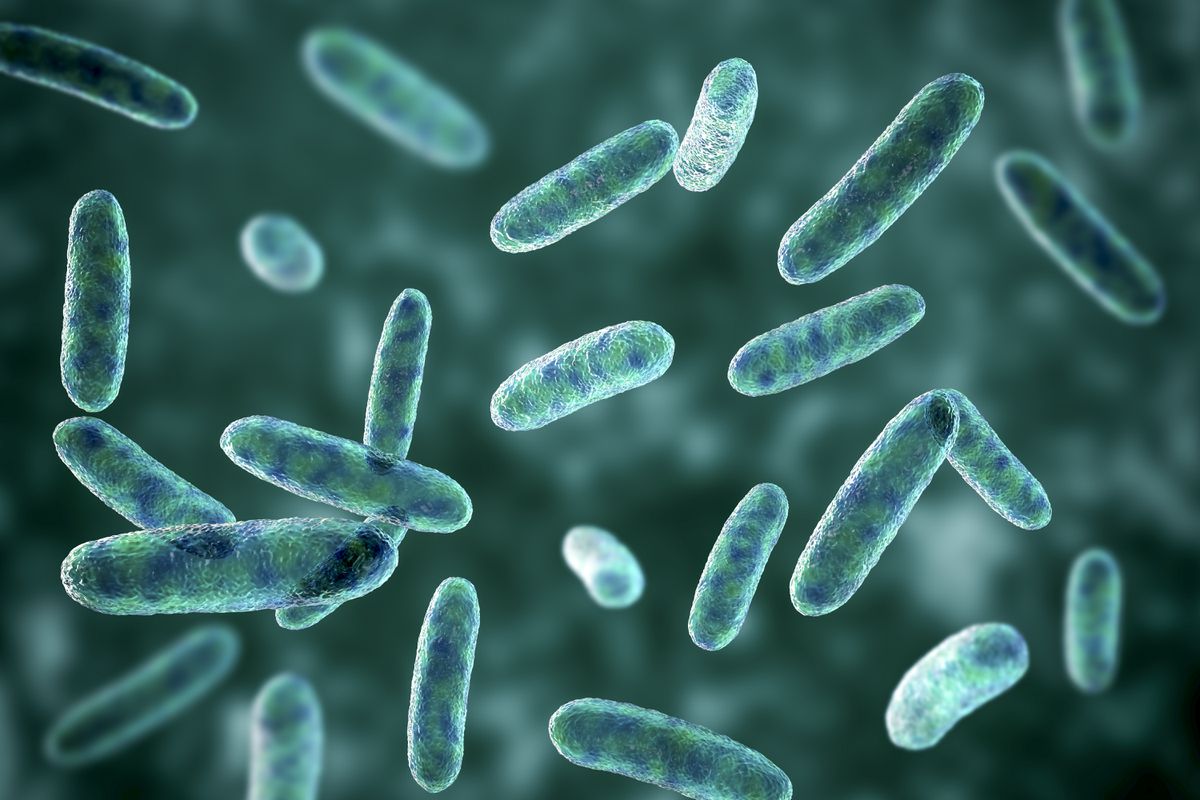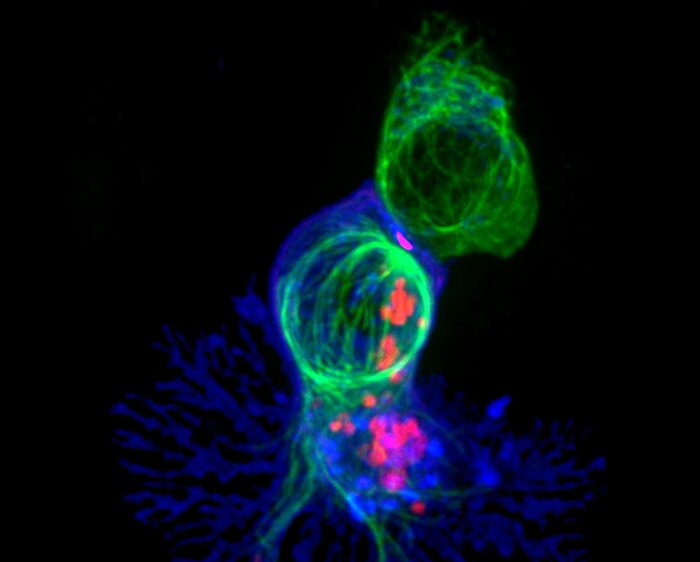There is an animal that is almost immortal.
It never gets old.
Barely a centimeter in size, the hydra is a tiny freshwater invertebrate tethered to eternal youth.
It was discovered in 1998 by Daniel Martínez, professor of Molecular Biology at the Pomona University of California, when he was trying to prove just the opposite: “I decided to start experiments with the hydra with the idea that I was going to show that it ages because all animals age.
But, after four years, there was no mortality.
And for a tiny bug, like the hydra, it's a lot.
Little things live for weeks, but not years,” he muses.
The established dogma of the inexorable death of living beings staggered in the bowels of the tiny hydra and captured the attention of the scientific community: how was it possible, what was special about it and, most importantly,
The explanation for the hydra's eternal youth lies in its body, "made entirely of stem cells," explains Martínez: the animal constantly regenerates itself.
Something, he advances, unthinkable in the human being: "We cannot allow ourselves that our entire body is made of stem cells because we need organs: as we are so large, we cannot absorb food through the skin, we need a system to ingest food and then take them to the whole body.
The formation of organs requires that our cells differentiate and that makes them lose their ability to reproduce;
when they win it back, we have cancers.
So once they decide they're going to differentiate, we have a lot of control so they don't reproduce.
If that doesn't happen, we have problems”, summarizes this Argentine biologist based in California.
In summary,
More information
“Within two decades we will be able to prevent aging”
The expert flatly rejects that it is possible to keep human beings young indefinitely, as is the case with the hydra.
But he does admit that the findings in this animal can help unravel the molecular mechanisms of aging in humans, one of the great expeditions that the scientific community has been carrying out for several decades and, in recent years, with more zeal.
Shinya Yamanaka's discovery in 2006, which demonstrated the possibility of
rewinding
adult cells to embryonic stages, revolutionized the science of aging.
And although this mechanism is far from reaching humans, the scientific community does not give up its efforts to curb old age, which is associated with various diseases, such as cancer or Alzheimer's.
With the bullet of cell reprogramming and other formulas to stop the mechanisms associated with cell decrepitude, scientists are looking for ways to neutralize or reverse these processes.
But they warn: we will not be immortal —in fact, we can always die, even if it is accidentally—.
The goal is to grow old healthy.
The human being has been gaining years of life for decades: health improvements and the appearance of antibiotics and vaccines have cut mortality from the front and the back, to a life expectancy of 73 years in the world (in 1960, it was 53).
In Spain, these figures rise to 80 for men and 85 years for women.
And they continue to rise while the scientific community debates whether there is a limit: a 1996 study put the ceiling at 120, while another 2016 investigation pointed out that longevity beyond 125 years is unlikely.
The oldest person in the world was Jeanne Calment, a French woman who died in 1997 at the age of 122 years and five months.
Pura Muñoz-Cánoves, ICREA professor, Professor of Medicine and Life Sciences at Pompeu Fabra University (UPF) and researcher at the National Center for Cardiological Research, assures that the average life will continue to increase, but not forever.
“At the rate we are going, with the impetus that research has, aging will be further delayed, but we are mortal.
Someday we are going to die.
The idea is that the years we live are with more quality, with health”, explains this expert in cell biology.
In fact, she recalls, while the average life has grown, the ceiling—Calment's 122 years—has not lengthened.
“Rather than lengthening the maximum, it will be tried that those of 80 or 90 years live more than 100 and in good health conditions.
Those who are now being born will be able to become centenarians”, she predicts.
cell damage
Aging is, in essence, the accumulation of damage to cells and the loss of their normal function.
And scientists are working hard to discover the molecular mechanisms behind all this phenomenon.
“Why does damage accumulate [with age]?
Because there is more opportunity for it to occur due to external aggressions, such as sun exposure or lifestyle habits.
And because we lose capacities in cell repair and cleaning processes”, summarizes Muñoz-Cánoves.
In an article published in 2013 in the journal
Cell
, María Blasco, current director of the National Cancer Research Center, proposed nine molecular signatures of ageing.
In the document, in which other Spanish researchers, such as Manuel Serrano or Carlos López-Otín, also participated, the authors break down, among other causes, genomic instability (defects that accumulate in genes over time) or the loss of proteostasis , which implies failures in the elimination of defective proteins and when they accumulate, they cause diseases.
There are many causes behind aging.
Blasco also points out, for example, the role of telomere shortening, one of his main lines of research.
These structures, found at the tips of chromosomes, get shorter over time as cells divide.
“We know that when telomeres are very short, aging is triggered.
In mice, if you lengthen the telomeres, the animals live longer."
Behind aging is also the deregulation of the nutrient sensing system —failures in the mechanisms that are activated in the body when there is or is not food— and epigenetic alterations, which are all those changes that affect the molecules that stick together and interact with the DNA.
An investigation published in
JAMA
focuses on causes such as “changes in stem and progenitor cells that lead to a reduced ability to repair or replace tissues” and “chronic low-grade inflammation that is sterile”—with no known pathogens to account for it.
Muñoz-Cánoves, for his part, emphasizes the reduction in autophagy capacity.
“It is as if, during aging, the dirt sweeping or suction system, which removes molecules that do not work well in cells, breaks down and that dirt ends up accumulating.”
Cellular senescence is yet another mechanism that fuels aging: cells have a kind of programmed shutdown system in which, when they find irreparable damage inside, to protect themselves, they stop dividing (senescence), but they do not die;
in aged tissues, senescent cells accumulate and can release compounds "that damage the surrounding environment and produce a state of inflammation," says Muñoz-Cánoves.
The hydra, seen under a microscope. Gerald Helbig (Getty Images/iStockphoto)
The science of aging seeks to tackle all these mechanisms that ultimately end up causing disease.
But there is still no silver bullet.
Only attempts, Muñoz-Cánoves points out.
Like senolytic drugs, which are compounds that cause those senescent cells that accumulate in aged tissues to die and disappear.
“It has been seen in tests on mice that using senolytics, which eliminate senescent cells, or increasing the autophagy capacity, the cells will be cleaner”, specifies the UPF professor.
Against the shortening of telomeres, Blasco proposes activators of telomerase, an enzyme that makes the DNA of telomeres grow again, thus slowing down aging.
“By repairing telomeres, telomerase prevents very short telomeres in the cell.
Very short telomeres cause significant damage, causing cells to either stop dividing or commit suicide;
in both cases, they lose their regenerative capacity”, explain Blasco and Mónica Salomone in the book
Dying young, at 140
(Paidós).
In the search for drugs, studies are also underway to test the effects of metformin, a well-known antidiabetic, to try to delay ailments associated with aging, such as cancer or dementia.
Project leader Nir Barzilai, director of the Institute for Research on Aging at the Albert Einstein School of Medicine in New York, told
The New York Times
in 2016 that the goal was to “prolong the duration of health.”
“The best we can hope for from metformin is an additional two to three years of healthy aging.
But the next generation of drugs will be much more powerful."
The US National Institute on Aging launched the Testing of Interventions Program in 2002 to try to find potential effective anti-aging agents and has located nine compounds that could play a role in lengthening life expectancy.
cell reprogramming
Cellular reprogramming, which earned Yamanaka the Nobel Prize for Medicine in 2012, is another line of therapeutic research in vogue.
It has already been tested on cells
in vitro
and on mice.
The Spanish researcher Juan Carlos Izpisua demonstrated, from the Salk Institute in the United States, that in mice with progeria (premature aging), the combination of the so-called Yamanaka factors —the combination of proteins that are in embryonic cells and are capable of starting genes that were stopped—manages to prolong their lives.
Experts, however, are cautious.
“The advances in mice are encouraging and have been seen in cultured cells in humans.
But it is very difficult to set deadlines.
Tissue reprogramming in humans cannot be done yet, but the proof of concept is there”, says Muñoz-Cánoves.
Blasco considers this technique more “futuristic”: “When you reprogram, you lengthen the telomeres, yes, but it changes the identity of the cell and that is dangerous.
When you reprogram, you take away the personality and bring it back.
And if you don't know the identity of the cell, you don't control what's going on.
I see far in time that it can be used, ”she weighs.
The UPF researcher accepts the difficulties of this technique, "the most drastic and with the most amazing effects", she admits.
But she insists that the results of the studies are “encouraging”: “In the latest Izpisua studies, they reprogram cells by controlling the factors and without losing their identity.
There is no need to return to the embryonic stage.
It is about doing a controlled pulse of treatment, just a few doses that reset the cells a little.”
Izpisua tested the effects of long-term partial reprogramming in healthy mice and assured that "it leads to rejuvenating effects in different tissues, such as the kidney and the skin, and at the organism level."
In practice, adds Muñoz-Cánoves, it may not be necessary to reprogram all the cells either.
“With old age, comorbidities appear: the dysfunction of an important organ brings other problems.
Perhaps by rejuvenating this organ, we could prevent the cascade of diseases without having to touch the rest of the body."
The eyes, in any case, are set on the field of cellular rejuvenation.
Muñoz-Cánoves will leave his position at UPF to join Altos Lab, a new US company financed by billionaires such as Jeff Bezos and focused on developing technologies to slow down aging, before the end of the year.
The company has also signed Izpisua, Serrano and Yamanaka himself, who is on the scientific advisory board.
healthy aging
The magic potion to rejuvenate, however, is not near nor is it expected, the experts consulted point out.
Salvador Aznar Benitah, head of the Stem Cell and Cancer Laboratory at the Barcelona Biomedical Research Institute (IRB), assures that Yamanaka's finding "broke the basic dogma that one cannot return to the embryonic state", but warns: "You can reprogram aging tissue to rejuvenate it, but in the end, that animal dies.
We shouldn't think about immortality."
Muñoz-Cánoves agrees: “Youth will not be eternal.
There will be healthy aging, without continuous ailments”.
Immortality or eternal youth, like that of the hydra, remains a chimera.
And for Martínez, almost better this way: “I don't think we can not age.
What's more, if that ever happens, we're going to have to decide who wants and who doesn't want.
I, in particular, would not be interested in not getting old, life would seem too boring if I have all the time in the world.
I imagine Beethoven knowing that he would live 500 years… I don't know if he would produce the same amount of spectacular music that he produced”.
You can follow
EL PAÍS Salud y Bienestar
on
,
and
.

/cloudfront-eu-central-1.images.arcpublishing.com/prisa/OIXAZPONDNBPJHE4BAVWJKNU5Q.JPG)





